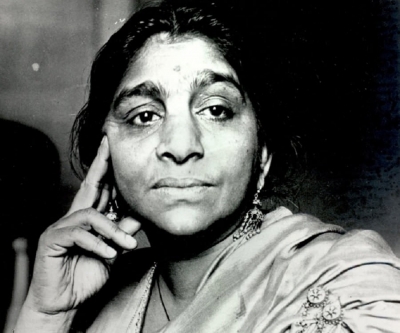
Sarojini Naidu was the first woman president of the Indian National Congress and free India’s first woman governor. But first and foremost, she was a poet. A uniquely talented poet, Sarojini had the ability to capture the essence of humanity through her lyrical verses, which are recited in schools across India even today. But do you know how she found her voice as a poet?
Early life
Sarojini was born in Hyderabad on February 13, 1879, to Aghornath Chattopadhyay, a scientist, philosopher and co-founder of the Nizam College, and Barada Sundari Devi, a Bengali poet. A gifted student, Sarojini was proficient in Bengali, Urdu, Telugu, French and English. At just 12 years of age, she topped the matriculation exam at the University of Madras.
Once while working on an algebra problem, she penned a 1,300-line-long poem titled The Lady of the Lake. When she showed it to her father, he recognized her literary talent and encouraged her to pursue writing, even though he initially wanted her to study mathematics.
Sarojini wrote the play Maher Muneer in the Persian language. And her father sent one copy to the Nawab of Hyderabad. The Nawab was greatly impressed by the play written by a young girl and offered her a scholarship to study abroad. So at 16, she took admission to King’s College, London, and later, pursued further studies at Girton College, Cambridge.
Finding her voice
Studying in England, Sarojini got an opportunity to meet with some of the greatest literary names of the time. One of them was prominent English poet, Edmund Gosse, who had influenced James Joyce and W.B. Yeats. Gosse guided Sarojini to stay true to Indian themes in her poetry. Following his advice, Sarojini was able to find her voice as a poet. Weaving Indian festivals, customs and traditions, flora and fauna into her verses, she wrote about the simple joys and sorrows of life. Her collections The Golden Threshold, The Bird of Time, and The Broken Wing earned her both national and international recognition. Prominent Indian personalities such as Rabindranath Tagore, and Jawaharlal Nehru counted them among her fans.
At 19, she married Dr. Govindarajulu Naidu even though he belonged to a different caste. When she returned to India she actively took part in demonstrations against the Partition of Bengal. Freedom fighter Gopal Krishna Gokhale, who admired her poems, inspired her to use her poetry to encourage the masses to join the Independence movement. Her poetry helped galvanise the public into action since the British had banned the publication of Indian newspapers. Her In the Bazaars of Hyderabad spread the message of Swadeshi.
For her work in the field of poetry writing, Sarojini earned the sobriquet “The Nightingale of India”.
Empowering women
Sarojini travelled throughout the country to encourage women to take part in the movement. Along with Annie Besant, Sarojini founded the Women’s India Association at Adyar in Chennai (then Madras). She demanded recognition from the Congress and the British for women’s suffrage in India.
Sarojini developed a strong friendship with Gandhiji, and remained by his side for 30 years.
After India attained independence, she became the first woman governor of the United Provinces (present-day Uttar Pradesh). She served as governor till she died of a heart attack on March3, 1949.
Picture Credit : Google



